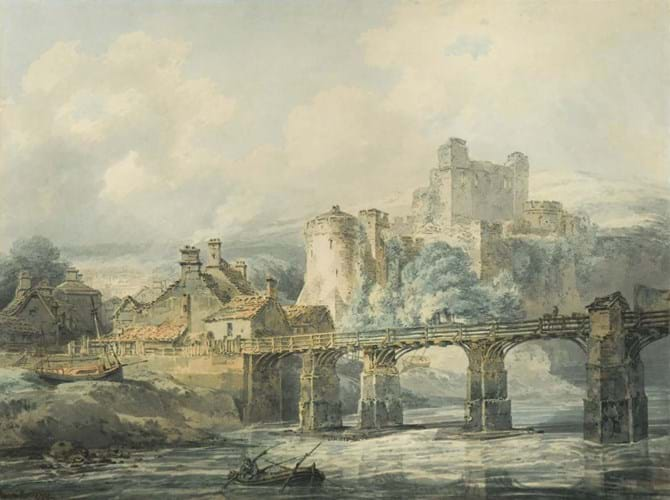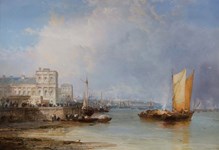
Chepstow Castle on the river Wye, Monmouthshire, Wales, a watercolour by JMW Turner that made £75,000 at Cheffins.
Estimated at £30,000-50,000 at the auction in Cambridge on March 22-23, it was knocked down at £75,000 to one of the phones.
While Turner’s later works on paper depicting views of Switzerland, Germany and Venice can make substantially more, especially those rendered with swirling effects of light and colour, this was seemingly the highest price for an earlier example ever sold at a UK auction outside London.
It outsold a watercolour showing the mouth of the river Avon that made £40,000 at Tennants in 2013.
Whereabouts unknown
The Chepstow picture was previously recorded but its whereabouts were unknown.
It came to the Cambridge saleroom from a London vendor descended from George Cock Gibson (1896-1989) in whose family it had been since at least 1956.
Following its consignment, its earlier provenance was traced back to Dr Thomas Monro, one of the artist’s most important patrons.
The 12¼ x 16½in (31 x 42cm) watercolour shows the castle overlooking a wooden bridge across the Wye. It was executed by a 19-year-old Turner shortly after a tour of Wales.
Signed and dated 1794, it was one of 16 scenes commissioned for John Walker’s Copper-Plate Magazine between 1794-98 – the first time Turner was asked to supply a set of topographical views for a publication.
Unfinished portrait
Another ‘missing’ picture generating interest at Cheffins was a portrait by Sir David Wilkie (1785-1841) which had been untraced since the early 20th century.
Depicting Andrew Christie (1788-1821) of Pitlessie, Fife, the 2ft 5in x 2ft (75 x 62cm) oil on canvas was unfinished because the sitter travelled to India where he died before it could be completed. Wilkie’s finished portrait of the sitter’s non-identical twin brother, Charles Christie, is now in the Philadelphia Museum of Art.
The portrait in Cambridge was first recorded by the artist’s biographer Allan Cunningham (1784-1842) shortly after Wilkie’s death but its location was unknown until it came to Cheffins from a vendor descended from Captain John Aitken (1863-1924), who bought it at London dealer Agnew & Son in 1905. Aitken himself was a descendant of the sitter’s sister.
Giving an insight into Wilkie’s early style and working methods, the picture was deemed a rare opportunity to acquire a striking and academically significant portrait by the Scottish artist.
With the work to be included in the forthcoming catalogue raisonné of Sir David Wilkie’s works by Hamish Miles (it is currently being edited), it was estimated at £10,000- 15,000 but drew good interest, selling at £24,000.
The price was among the highest sums at auction for the artist in the last 10 years.















